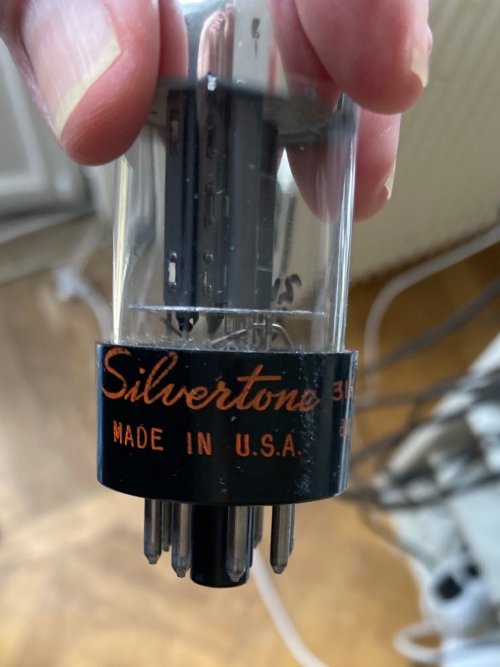Call back to several posts back re: 7N7 variations.
My original impressions between the "common" 7N7 and the oddball with smoked glass/chrome top found the latter to be superior. This was several years ago and several gears ago in a Cary preamp. My use of them now is in the output stage of a Lampizator DAC and having spent a couple days with the smoked and a good part of today with the common one I have to say I can't tell the difference in this application which, to my ear, is far more revealing than when in the preamp. So I became curious and looked closely at my small supply of 7N7 and now see more variation than I had initially noted. Poor pictures as a result of my general uselessness, sorry.
- Grey glass, chrome top, black parallel plates, rounded corner rectangle bottom mica, oval top mica, extra support rods and copper rods in the plates, too hard to see getter holder almost flat top.

- Heavy Chrome top, black parallel plates with rough finish, oval bottom and top mica, copper rods in the plates, too hard see getter holder, round top.

- Thinner chrome top with less "drip" down the sides, more refined looking black angled plates, dimpled square foil getter holder, round upper and lower mica, copper rods in plates, round top.

- Chrome only on the very top of glass, refined black angled plates, round "spiked" upper mica and round lower mica, halo getter holder, copper rods in plates, round top.

The reigning champ had been number 1 and "common one" I mentioned listening to at the start of this post is number 3 - so one parallel plates and the other angled. To be honest I'm not sure which of 2, 3 & 4 I had compared with 1 back when I had that preamp. I plan on checking them all out this weekend.
Oh, I vaguely recall briefly listening to a pair of 7AF7 I had back then (still have) with round black plates and disliking them. I may dig them out of the bottom of my drawer and give them a second chance too...
Cheers,
Robert
























